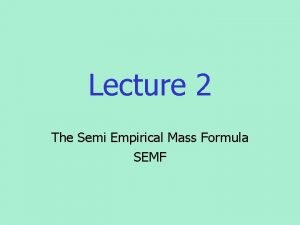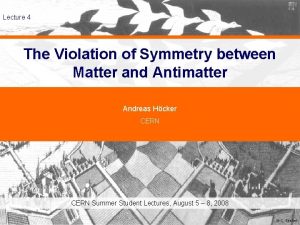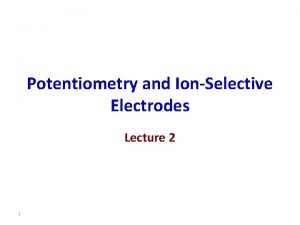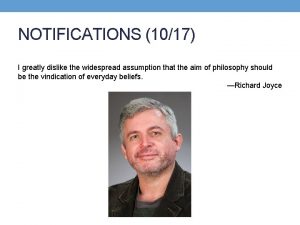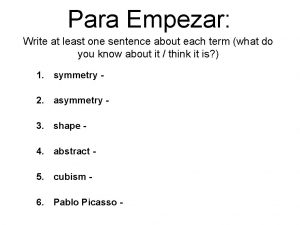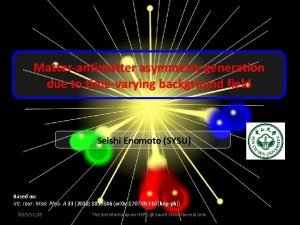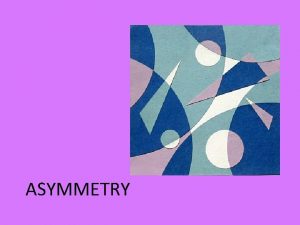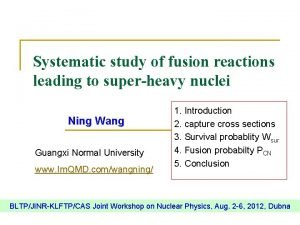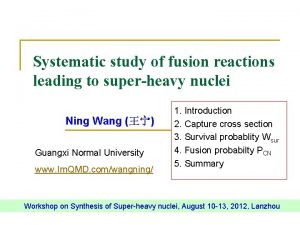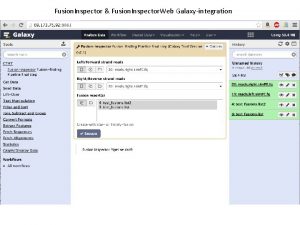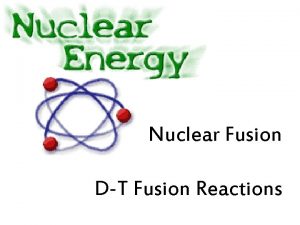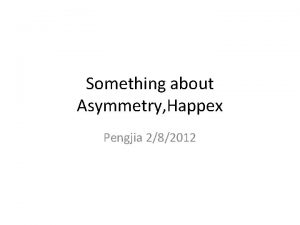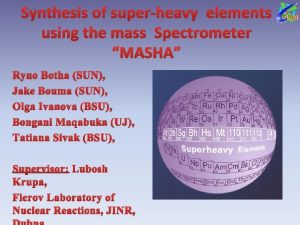Role of mass asymmetry in fusion of superheavy










- Slides: 10

Role of mass asymmetry in fusion of super-heavy nuclei K. Siwek- Wilczyńska, I. Skwira-Chalot, J. Wilczyński aim to compare our model predictions with the measured (Dubna, GSI, Riken) evaporation-residue cross sections for synthesis of super-heavy nuclei in xn reactions. to predict cross sections for the synthesis of new super-heavy nuclei in cold and hot fusion reactions. to verify the fusion hindrance factor (strongly dependent on the mass asymmetry).

(synthesis) = (capture) × P(fusion) × P(survive) Systematic studies based on experimental data: (capture) - the „diffused-barrier formula” ( 3 parameters): W. Świątecki, K. Siwek-Wilczyńska, J. Wilczyński Phys. Rev. C 71 (2005) 014602, Acta Phys. Pol. B 34(2003) 2049 Formula derived assuming: • Gaussian shape of the fusion barrier distribution • Classical expression for σfus(E, B)=πR 2(1 -B/E) A 2 fit to 48 experimental near-barrier fusion excitation functions in the range of 40 < ZCN < 98 resulted in systematics that allow us to predict values of the three parameters B 0, w, R (K. Siwek-Wilczyńska, J. Wilczyński Phys. Rev. C 69 (2004) 024611)

For very heavy systems a range of partial waves contributing to CN formation is limited (critical angular momenta for disappearing macroscopic fission barrier). We propose: cap(subcritical l ) = cap(E=Bo)*Bo/Ec. m. for E ≤ Bo for E > Bo

P(survive) – Statistical model (Monte Carlo method) Partial widths for emission of light particles – Weisskopf formula where: Upper limit of the final-state excitation energy after emission of a particle i i – cross section for the production of the compound nucleus in the inverse process mi, si , εi - mass, spin and kinetic energy of the emitted particle ρ, ρi – level densities of the parent and daughter nuclei The fission width (transition state method), E*< 40 Me. V Upper limit of thermal excitation energy at the saddle

The level density is calculated using the Fermi-gas-model formula • Shell effects included as proposed by Ignatyuk (A. V. Ignatyuk et al. , Sov. J. Nucl. Phys. 29 (1975) 255) where: U - excitation energy, Ed - damping parameter , – shell correction energy, δshell (g. s. ) (Möller et al. , At. Data Nucl. Data Tables 59 (1995) 185), δshell(saddle)≈ 0 (W. Reisdorf, Z. Phys. A. – Atoms and Nuclei 300 (1981) 227) Bs , B k ( W. D. Myers and W. J. Świątecki, Ann. Phys. 84 (1974) 186)

„Experimental” determination of fusion hindrance P(fusion) = σexp. (synthesis)/(σ(capture) P(survival)) Data - 48 Ca…… 70 Zn + 208 Pb, 209 Bi GSI, Riken Lines - calculations using Smoluchowski diffusion equation

Smoluchowski Diffusion Equation µ Viscosity of fluid Driving force Temperature W(x, t) = probability to find Brownian particle at position x at time t Exact solution in a parabolic potential V(x) = -bx 2/2 is a sliding, swelling Gaussian. P(fusion) = fraction of Gaussian captured inside the barrier as t→∞ P(fusion) = ½(1 -erf√B/T) B = bx 02/2 if x 0 ≥ 0 (injection point), saddle injection point W. J. Świątecki, K. Siwek-Wilczyńska, J. Wilczyński Acta Phys. Pol. B 34 (2003)2049, IJMP E 13 (2004) 261, Phys. Rev. C 71 (2005) 014602

Test of P(fusion) as a function of entrance channel asymmetry and excitation energy Calculations for Z=108 (different mass asymmetries): 26 Mg + 248 274 -xn Cm → Hs, 58 Fe+ 208 - Ch. Düllmann et al. Nature 418 (2002) 859, A. Türler et al. Eur. Phys. J. A 17 (2003) 505 266 -xn Pb → Hs, 136 Xe+ 136 272 -xn Xe → Hs S. Hofmann, Rep. Prog. Phys. 61 (1998) 639; and private communication

136 Xe + 136 Xe → 272 Hs experiment underway at Dubna

Summary: 1. SHE production cross sections (synthesis) = (capture) × P(fusion) × P(survive) 2. We have well tested tools for calculating capture cross sections (capture) and statistical decay of very heavy nuclei P(survive). For P(fusion) we use a simple model based on the Smoluchowski diffusion equation. This model works quite well for cold fusion reactions. 3. It is essential to test predictions of P(fusion) for hot fusion reactions and more symmetric systems which probably will be used in attempts to synthesize new SHE (Z=120 and beyond), therefore comparison of Mg+Cm, Fe+Pb and Xe+Xe reactions is very important. Kazimierz, September 27 - October 1, 2006
